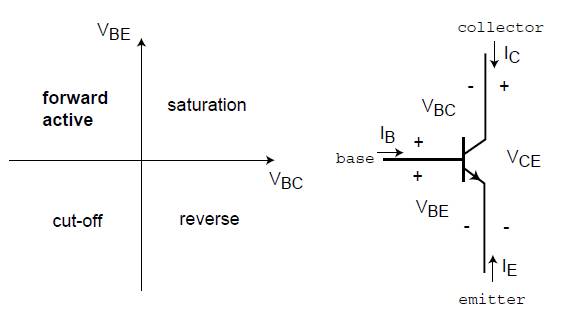BJT Characterization (Gummel Plot) 
Theory
Introduction:
The Gummel plot is a fundamental tool in semiconductor device characterization, providing insights into the behavior and parameters of BJTs essential for practical application in electronic circuits. A typical Gummel Plot shown in Figure 1:

Fig. 1. Circuit diagram
Operating Regions of BJT
A BJT has three main operating regions:
- Cut-off Region: Both IB and IC are very small.
- Active Region: The transistor operates as an amplifier.
- Saturation Region: The transistor is fully turned on.
Key Equations
Collector Current (IC):
$$I_C = I_S (e^{V_{BE}/V_T} - 1)$$
Where:
- IS is the saturation current.
- VBE is the base-emitter voltage.
- VT is the thermal voltage.
Base Current (IB):
$$I_B = I_C / β$$
Where β is the current gain of the transistor.
Gummel Plot Analysis
The Gummel plot involves plotting:
- IB vs VBE: Shows exponential relationship.
- IC vs VBE: Also shows exponential relationship.
Importance of Gummel Plot
- Parameter Extraction: Enables extraction of key parameters such as IS, β and the ideality factor of the transistor.
- Device Characterization: Provides understanding of the transistor's behavior.
- Circuit Design: Essential for designing circuits using BJTs.
